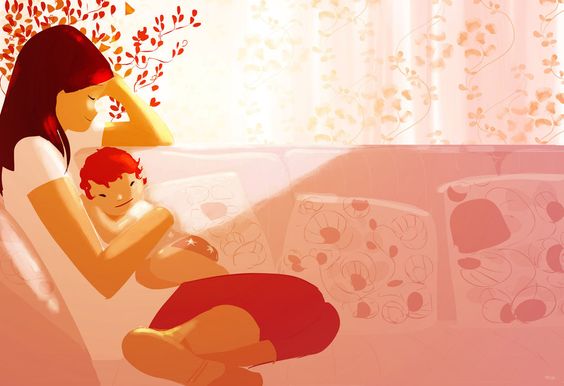Having a Child is More Than a Dream Come True

Becoming a parent means much more than having a dream come true or accomplishing a goal. Holding a newborn baby in our arms means that we have a project on the horizon that will last a lifetime.
It means your heart will forever live outside of your body and that you will enjoy every moment with this perfect being.
In the world of science and psychology, researchers often examine a women’s desire to be a mother. We can say, without a doubt, that this desire is somewhat private, intimate and often inexplicable.
However, scientists – constantly looking to isolate variables – tell us that this desire is almost always based on three motives.
I made a wish that took a long time to come true, but you’re finally here

Some children come after a long time of waiting and hoping. Long sought-after pregnancies that take a long time to come along…
Mothers who are unable to conceive. Men and women who dream of being parents… Families who try and try and only find frustration… Until finally, a miracle comes along and the dream becomes real life.
Whether your partner shares your deep desire or not, there are both women and men who dream of having children and wait for just the right time… when our sentimental life and our economy combine and provide for that magic moment.
But just when the moment seems perfect, they discover it’s not possible. The tests come back negative over and over again.
Conception doesn’t happen. And there is no other option than to look for help; to turn to the modern science of assisted fertilization.
At the same time, something that’s not always talked about is the psychological and emotional toll that this ordeal takes on both men and women.
The stress, the illusion, the hope and the frustration all create a heavy fabric that is difficult to process.
These are very complex situations that are marked by a strong desire to have children. In the majority of cases, the quest ends in success.
The “imaginary child” that lives inside us

This beautiful painting created by Henry James Draper at the end of the 19th century represents that magic moment when a nymph fulfills her dream of being a mother.
Draper himself explained that he imagined the woman walking sadly down the beach just before the scene portrayed in the painting. All of the sudden, upon the rocks, she finds a giant clam shell wrapped in sea weed.
Without even thinking, she pulls on the sea weed and the shell instantly opens up. As it opens, the nymph discovers a perfect little pink baby, dreaming peacefully on the pearly white surface. The woman gives thanks to the sea and picks the baby up in her arms.
This same desire for the arrival of a baby is always accompanied by the mental practice of the “imaginary child.”
This may seem like something psychologically and emotionally unhealthy. But actually, it can be immensely beneficial as long as one does not lose sight of logic and reality.
- This isn’t about attributing ideal virtues to an imaginary child, such as exquisite beauty and intelligence, academic success, or an always caring and obedient personality.
- The healthy thing to do is to picture one’s self happy and in the company of this child. The baby doesn’t need to be a future lawyer, concert pianist or a famous athlete. He can be whatever he wants to be. But we can imagine a little one who tomorrow will be able to do whatever he sets his mind to. We can imagine ourselves educating him and helping him. We can see ourselves always nearby, like a shining light in every stage of his life.

In conclusion, a person’s desire to be a mother or a father is based on many reasons that can’t be isolated or measured in a laboratory.
There is simply a deep desire to complete our lives – to share our lives with a happy and free child. We dream of giving that child wings to fly and roots to remember where he came from, and that he knows we will always love him.
Our wishes always come first in the form of dreams, and then later we enjoy them as they come true. Enjoy each day with your little treasure…
All cited sources were thoroughly reviewed by our team to ensure their quality, reliability, currency, and validity. The bibliography of this article was considered reliable and of academic or scientific accuracy.
- Bowlby, J. (1986). Vínculos afectivos: formación, desarrollo y pérdida. Madrid: Morata.
- Bowlby, J. (1995). Teoría del apego. Lebovici, Weil-HalpernF.
- Garrido-Rojas, L. (2006). Apego, emoción y regulación emocional. Implicaciones para la salud. Revista latinoamericana de psicología, 38(3), 493-507. https://www.redalyc.org/pdf/805/80538304.pdf
- Marrone, M., Diamond, N., Juri, L., & Bleichmar, H. (2001). La teoría del apego: un enfoque actual. Madrid: Psimática.
- Moneta, M. (2003). El Apego. Aspectos clínicos y psicobiológicos de la díada madre-hijo. Santiago: Cuatro Vientos
